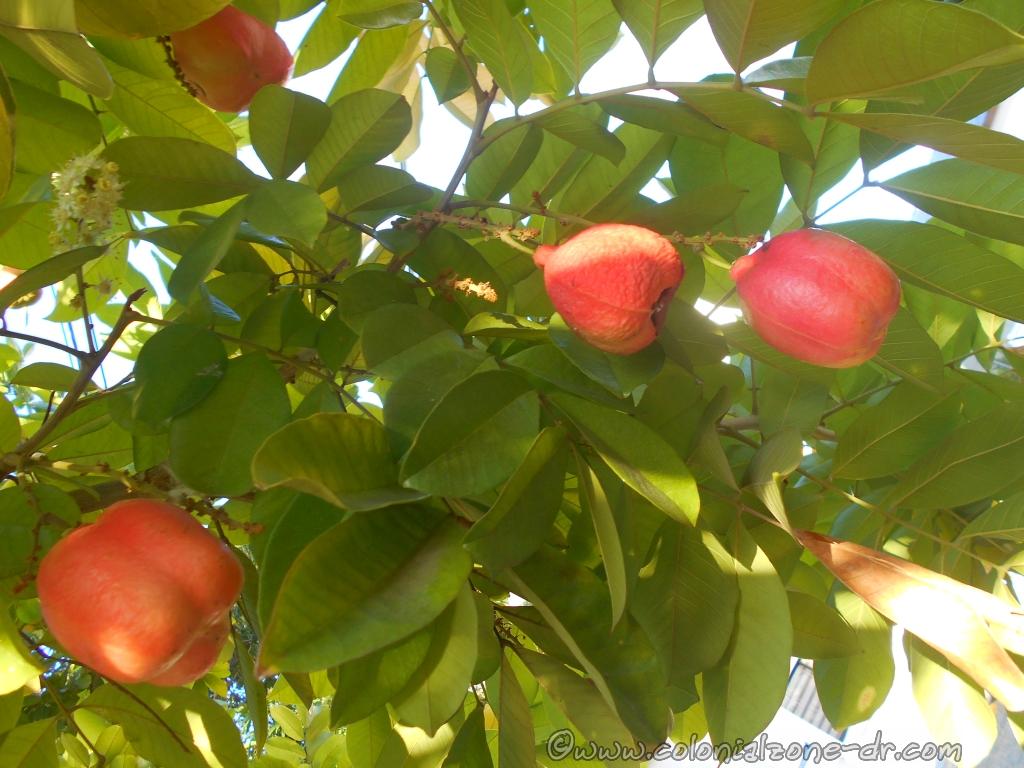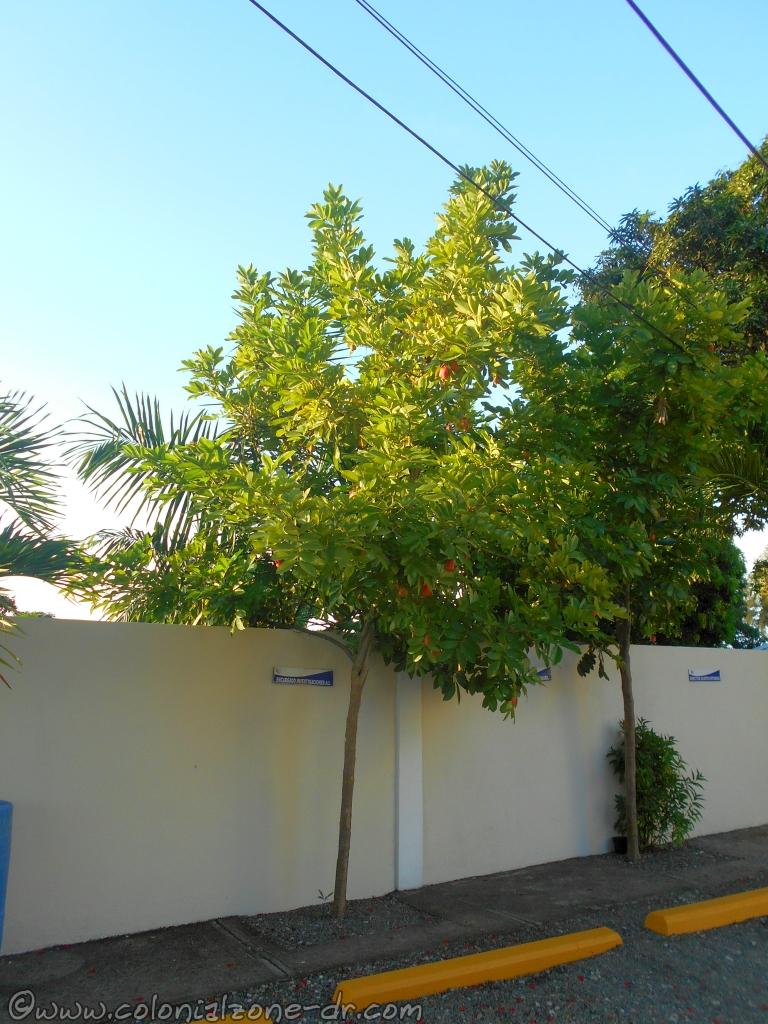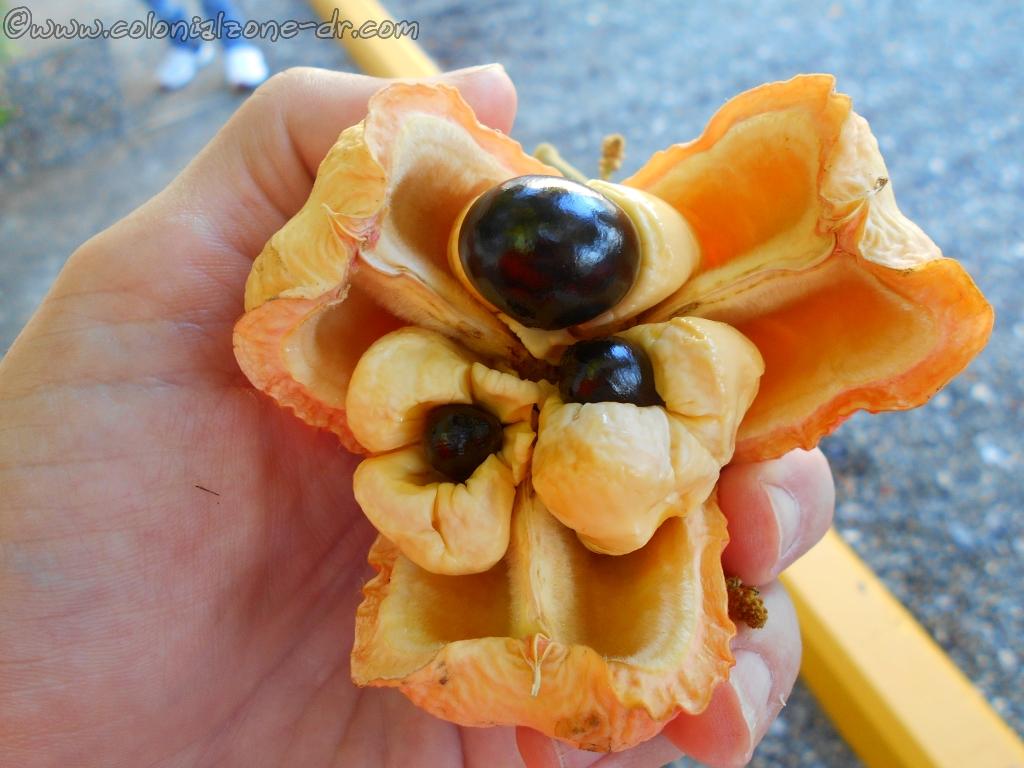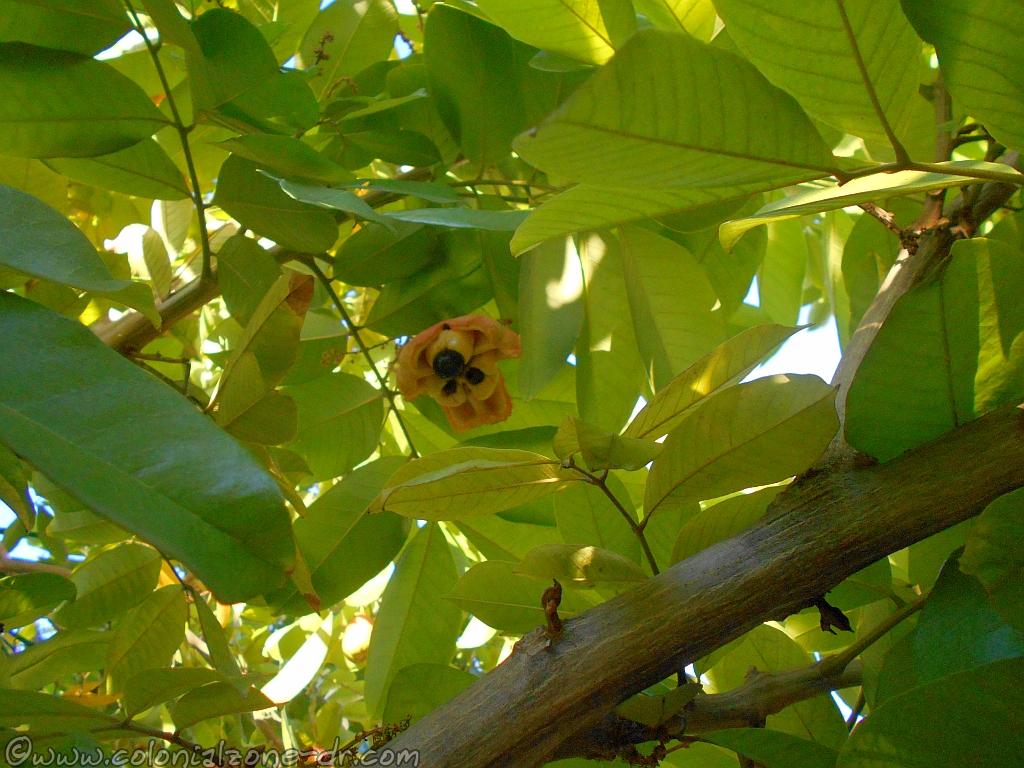Árbol de Seso
Árbol de Seso (Seso or Ackee) is an interesting and tasty exotic tropical fruit. It is sweet when cooked and very toxic if eaten raw or unripe. This pear-shaped fruit is the national fruit of Jamaica and grows in many of the tropical and Caribbean countries including the Dominican Republic.

Fruit and Tree With Many Names
The scientific name is Blighia sapida. This fruit is also known as Ankye, Ackee Apple, Seso Vegetal, Cerebro Vegetal, Palo de Seso, Huevo Vegetal, Fruta del Huevo, Pera Roja, Arbre à Fricassée, Jakí, Kaha and many other names. In Dominican Republic the name is Fruta al Cerebro, or Seso because the fruit looks like a brain.

The Tree, Flowers and Fruit
The evergreen ackee tree can grow to around 10 meters / 32 feet in height. The leaves are oblong, leathery and shiny and grow fan or feather-like with about 6 to 8 leaves in a group.
Árbol de Seso tree produces unisexual flowers. This means the flowers on the same tree have either male or female parts and need to be cross pollinated. These flowers are white to light green and are very fragrant.
Ackee fruit usually has 3 lobes (sometimes 2 – 4 ) that turn from green to bright red as it ripens. The fruit, to me, has a waxy, almost plastic fruit look. The fruit is very toxic before it is completely ripe. When the fruit ripens it splits open revealing 3 (2 – 4 depending on how many lobes it has) sections each with a shiny black seed at the end. The fruit or meat inside is soft and spongy and almost looks like a brain. This fruit contains proteins, minerals and vitamins and a high amount of Vitamin C.

Prepare, Eat and Uses for Ackee
After the ackee fruit is ripe and splits open the fruit inside is removed. The shiny black seeds, which are toxic, need to be discarded along with the fruit husk. The creamy white fruit must be separated from the membrane. Then the creamy off-white brain looking fruit needs to be gently boiled either in salted water or milk. Boil it for about a half hour to rid the fruit of toxins. This boiled fruit can then be sauteed in butter or added to many different fish and vegetable dishes. The flavor is slightly sweet and nutty, almost like a raw pea.
There are many ackee recipes available on the internet. Search for ackee recipes and check it out.
Ackee ripe fruit, leaves and bark have been used to make folk medicine in the treatment of colds, fever, water retention, and epilepsy. The fragrant flower is used to make perfumes. The hard and durable wood of the ackee tree is used in construction, pilings, oars, paddles and casks.

Toxic
Ackee fruit is highly toxic and can be lethal. It contains a poison called Hypoglycin A, especially if it is not ripe or prepared correctly. Ingesting could cause vomiting, seizures, coma that could end in death.
When the fruit is ripe and properly boiled, the poison dissipates.
“Ackee contains high levels of the toxin hypoglycin A, which disrupts blood glucose production and increases the risk of hypoglycemia. Left unchecked, hypoglycemia can lead to coma and even death. Thus, the importation of raw fruit has been banned by the FDA since 1973. However, the fruit may still be purchased in canned and frozen forms.” https://www.mdlinx.com/article/6-surprising-foods-you-didn-and-8217-t-know-were-banned-in-the-us/57s3MRFCfVZNTaPGI0JVcn
Reference https://marilynperalta.com/2018/07/01/arbol-de-seso-vegetal/

